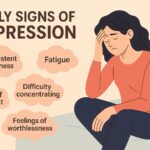How to Build a Balanced Diet That Supports Real Health
Build a balanced diet — it’s a phrase we hear often, but what does it really mean in practice? In 2025, with endless fad diets and conflicting advice online, creating a truly balanced and sustainable way of eating can be confusing. That’s why registered dietitians and nutrition experts recommend sticking to science-based principles rooted in real food, variety, and moderation. In this guide, you’ll learn how to build a balanced diet that works for your lifestyle and long-term health.
What Is a Balanced Diet?
A balanced diet includes a mix of essential nutrients your body needs to function properly. That means getting the right amounts of:
- Carbohydrates for energy
- Proteins for muscle repair and immune support
- Healthy fats for brain and heart health
- Vitamins and minerals from whole foods
- Fiber for digestion and metabolic support
To build a balanced diet, the key is variety—not cutting out entire food groups or obsessing over perfection.
Why a Balanced Diet Matters
Eating a well-rounded diet supports every system in your body. It can:
- Boost energy levels and mental clarity
- Support immune function and reduce illness
- Maintain a healthy weight without extreme restriction
- Prevent chronic diseases like heart disease and type 2 diabetes
- Improve gut health and reduce inflammation
Plus, eating in balance is sustainable. It doesn’t rely on willpower alone but becomes part of your lifestyle.
How to Build a Balanced Diet: Step-by-Step
Use this simple framework to create meals that nourish your body without stress:
- Fill half your plate with vegetables and fruits — These are rich in vitamins, antioxidants, and fiber. Go for color variety!
- Include lean protein — Options include chicken, fish, tofu, eggs, legumes, and Greek yogurt.
- Add healthy carbs — Choose whole grains like quinoa, oats, brown rice, and sweet potatoes.
- Use healthy fats — Include avocado, olive oil, nuts, or seeds for satiety and nutrient absorption.
- Drink water — Staying hydrated supports digestion and metabolism.
Portion Control Without Counting Calories
You don’t need a calculator to build a balanced diet. Instead, try visual portioning:
- ½ plate: non-starchy vegetables (e.g., spinach, broccoli, bell peppers)
- ¼ plate: protein (e.g., grilled salmon, beans, eggs)
- ¼ plate: whole grains or starchy vegetables (e.g., brown rice, sweet potatoes)
- +1 serving of healthy fat (e.g., a handful of nuts or drizzle of olive oil)
This plate method is flexible and easy to adapt for any meal, including breakfast or snacks.
What to Limit (But Not Eliminate)
Balance doesn’t mean restriction. You can still enjoy less-nutritious foods in moderation. Experts recommend limiting:
- Ultra-processed snacks high in added sugars and refined oils
- Sugary drinks, including soda and sweetened coffee beverages
- Fried and fast foods high in trans fats
- Excess sodium, especially from packaged meals
Enjoy treats mindfully. A balanced diet leaves room for both nourishment and joy.
Common Myths About Building a Balanced Diet
- “Carbs are bad.” — Not true. Your brain and body need carbohydrates. Just choose whole food sources.
- “Fat makes you fat.” — Healthy fats are essential for hormone production and brain health.
- “You need to detox.” — Your liver and kidneys already detox your body naturally. Focus on whole foods, not expensive cleanses.
Special Considerations: Vegan, Keto, and Gluten-Free
You can build a balanced diet on almost any eating style—as long as you plan well. For example:
- Vegans need B12, iron, calcium, and omega-3 sources from fortified foods or supplements.
- Keto eaters should prioritize vegetables, healthy fats, and avoid excessive saturated fat.
- Gluten-free diets must include fiber-rich alternatives like quinoa, lentils, and brown rice.
Meal Planning Tips for Busy People
- Batch-cook grains, proteins, and veggies on weekends
- Use freezer-friendly meals for busy weekdays
- Keep healthy snacks on hand—like mixed nuts or hummus and veggies
- Start with small changes: add one more vegetable per day, swap refined grains for whole grains, or cook at home more often
FAQs About Building a Balanced Diet
- How many meals per day should I eat?
That depends on your schedule and hunger. Three balanced meals and 1–2 small snacks work for most people. - Do I need to count macros?
No. Focus on whole food sources and portion balance unless your doctor advises otherwise. - Is organic food necessary?
Not always. The priority is eating more fruits, vegetables, and whole foods—organic or not.
Conclusion: Build a Balanced Diet You Can Stick To
Learning to build a balanced diet isn’t about following rules—it’s about creating habits that support energy, mood, and health every day. Start with small, realistic steps and choose foods that nourish your body and fit your lifestyle. With the right approach, healthy eating becomes simple, enjoyable, and sustainable for the long haul.



